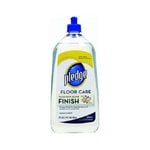Hey guys. I am pretty fustrated. Painting the canopy of my bf 109 has resulted in paint coming off when removing the mask. Before brush painting with Vallajo model paint I primed the canopy first. I am going nuts. For masking I use Tamyia masking tape. Watching you guys it is possible to make crisp and beautiful canopies. This is my second model after a 25 year break from modeling. Impatient.......me.....nooooo
Kind regards
Steen, Copenhagen
Kind regards
Steen, Copenhagen

